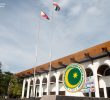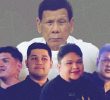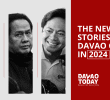Meet Roy. He has just finished Grade 12 under the Technical-Vocational-Livelihood (TVL) track. Roy initially wanted to be a biologist – he had all the potentials, as reflected in his high school report card. However, the school nearest to Roys remote village offers only strands under the TVL track. The Science, Technology, Engineering, and Mathematics (STEM) strand is offered mostly by schools in town, and Roys parents could not afford to send him there. Torn between studying a field he did not at all like and not at all going to school, Roy chose the former. Now, Roy graduates with a heavy heart. While he is proud of all the technical skills he has learned from his track, he feels stranded. He is certain: this is not what he imagined his future to be.
This April, the first graduates of the controversial K-12 Program by the Department of Education (DepEd) will be marching down the halls of their schools after finishing an additional two years of basic education. While some considered this as an opportunity for learning, others regarded it as an additional burden.
The K-12 program promised to offer students an education that would help them prepare for their future, giving them an array of options that should supposedly cater to their desires and abilities. Despite the protests of some groups, many schools asserted (and boasted to some extent) that they are ready for this reform. But, under K-12, is a student really given the chance to choose or, typical in this country, is his future already chosen for him by his economic status and marginality?
Based on the list provided by DepEds official website, in Davao City, out of around 164 schools, 133 offer the General Academic Strand (GAS), 125 offer the Technical-Vocational-Livelihood (TVL) track, 74 offer the Accountancy and Business Management (AMB) strand, 66 offer the Humanities and Social Sciences (HUMMS) strand, and only about 58 offer the STEM strand. Significantly more than half of these 58 schools are private. The remaining schools, especially those that are public and situated in remote areas, can offer only one to two strands. These numbers invite several questions. If schools are indeed K-12 ready, how come only a few could offer several strands? Is this a manifestation of the lack of teachers or facilities? If K-12 really aims to help students pursue the profession of their choice, then why offer them limited choices? Why make some strands inaccessible for the marginalized? Are we gearing towards producing professional Filipinos or are we propelled by K-12 to export workers outside of our country for wages their hard work do not deserve?
These questions will, of course, receive the typical responses. We are still adjusting (despite the several years DepEd has spent to confidently claim the country is ready for this new program). Technical-Vocational-Livelihood strands are the most practical (even though education should cater to students interests and match students skills). There are scholarships available (but they are not available for everyone and could not compensate a student’s total expenses). Maybe education is not for all. We have no choice.
K-12, with some schools offering inadequate choices, worsens the state of our educational system by making education a privilege than a right. It seemingly tells students to choose a path according to what he or she can pay for, systemically oppressing them by giving others more options while making these limited for some. Somewhere, a student may have the potential to be this country’s greatest scientist, but this possibility becomes very slim as he is robbed of the opportunity to do so. Now, some students like Roy may feel stranded as they march during their graduation, not knowing how to move to the future they desired when they are left in a place that are not of their own choosing to begin with. (davaotoday.com)
Reil graduated from Ateneo de Davao University (AdDU) with the degree BS-Education in Mathematics. A former editor-in-chief of Atenews, the university’s official student publication, he now teaches mathematics to Grade 11 AdDU Senior High School students as he continues writing short fiction.










